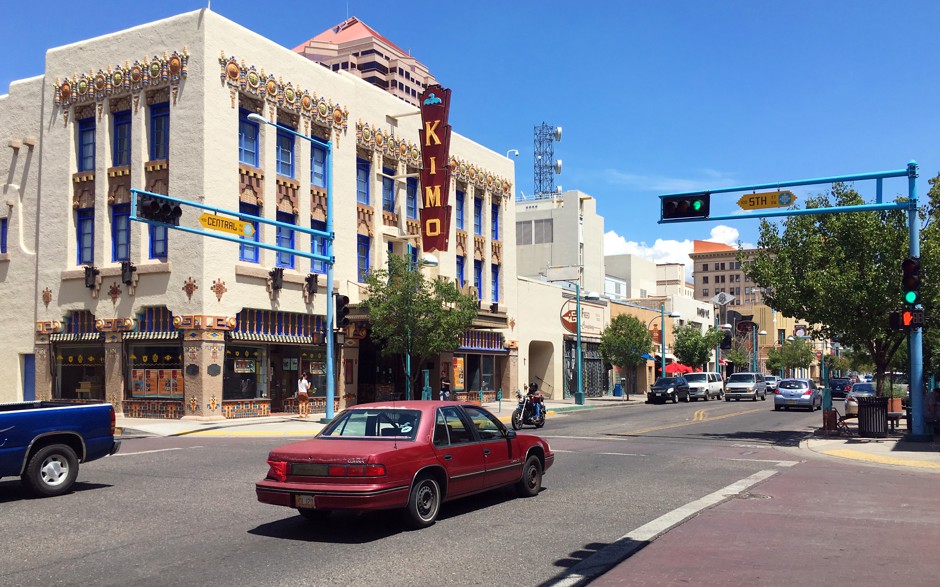February 13, 2019 | Why Historic Preservation Needs a New Approach | By Patrice Frey, President and CEO of the National Main Street Center |

The Kimo Theater on historic Route 66 in downtown Albuquerque, New Mexico. Albuquerque was one of 16 New Mexico towns and cities to recently receive accreditation from the National Main Street Center setting up more possible funding for revitalizing downtowns. Russell Contreras/AP
With new tools and financing methods, preservationists could save endangered spaces without alienating those who should share our cause. Here’s how we can adapt.
One of the great surprises of the digital age is that quality of place remains such a key factor in where people choose to live and businesses choose to open their doors. Only 10 or 20 years ago, futurists and technologists promised us that place would become irrelevant: We would all live and work and connect with the world via the internet, free to roam anywhere we chose. But millions of years of evolution are tough to shake; we remain social creatures and continue to seek connection, delight, and fulfillment in real, physical space.
The growing importance of quality places has been a boon for many older commercial districts in U.S. cities, many of which have suffered from a legacy of disinvestment. At the National Main Street Center, an independent subsidiary of the National Trust for Historic Preservation where I serve as president and CEO, we’ve seen a surge in interest in revitalizing historic downtowns, thanks to the market’s new enthusiasm for flexible and character-rich space, as well as social and demographic forces that favor these types of districts. Younger Americans prefer urban living and have been migrating downtown in pursuit of walkable neighborhoods and city amenities, including older and historic buildings. On paper, these new young urbanites should be fans of historic preservation. Indeed, research from the National Trust for Historic Preservation shows that over 90 percent of Millennials express support for preservation.




